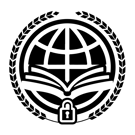Futurehome Smarthub Mandatory Subscription Fee

Futurehome Smarthub[1] is a Norwegian smart-home gateway originally sold as a one-time purchase. The hub lets users pair Zigbee-, Z-Wave-, and Futurehome-branded devices and control them locally or remotely through a free mobile app and cloud service; it also exposes local APIs for third-party integrations such as Home Assistant. After the company’s 2025 bankruptcy and relaunch, any continued use now requires an annual subscription of 1,188 NOK (≈ $117); households that decline are locked out of the app, automations, and the local API interface, leaving only manual, on-device control.[2]
Background
Futurehome AS, founded in Stavanger, Norway, in 2013, sold the Futurehome Smarthub – a central hub that connects and controls various IoT devices using standards like Zigbee and Z-Wave. The Smarthub and Futurehome’s own product line (thermostats, smart plugs, relays, sensors, etc.[3]) allow users to automate lighting, heating, EV charging, and other home functions via a mobile app and cloud platform. Prior to 2025, Futurehome operated on a one-time hardware purchase model, with app and cloud services included at no extra cost. Users could remotely monitor and control their smart homes through the Futurehome app without any subscription fees.
June 2025 Subscription Rollout
On 20 May 2025 Futurehome AS was declared bankrupt. Shortly after, the Futurehome platform and services were acquired by a new joint venture, 50% held by the original owners and 50% by Sikom Connect AS, a Norwegian IoT company, and operations resumed under a new entity, called FHSD Connect AS.[2][4]
On 26 June 2025 a mandatory subscription was activated in the app, with the existing households being granted a four-week free trial. After the trial, continued use of the hub requires 1,188 NOK per year (≈ US $117); non-subscribers are locked out of the app, automations, and local API. FHSD justified the fee as necessary to “secure stable operation, fund product development, and provide high-quality support”, according to FAQ.[2][4][5]
The hub is installed in over 38,000 households across Norway.[6]
-
Futurehome app home screen prompting the user to activate a subscription.
-
Subscription-activation screen showing annual-payment terms; one link opens the subscription FAQ, the other opens a feedback form (https://us1.zonka.co/1pBYm3)
-
Feedback form presented to users who decline the subscription (https://us1.zonka.co/1pBYm3)
Consumer response
The response from Futurehome’s user base in Norway was overwhelmingly negative. Many customers expressed shock, anger, and a sense of betrayal at what they saw as a sudden “paywall” imposed on equipment they had purchased in good faith. On the Norway discussion forum Reddit (r/norge), a thread about Futurehome’s new policy quickly filled with outraged comments.[7][8]
Impact on Third-Party Integrations
One particularly painful aspect for advanced users is that the subscription lockout also breaks any third-party integrations. Futurehome’s ecosystem wasn’t completely closed – prior to this change, enthusiasts could integrate the Smarthub with systems like Home Assistant (an open source smart home platform)[9] or use Homebridge to link with Apple’s HomeKit[10]. These integrations typically relied on Futurehome’s local API or MQTT interface to communicate with the hub. Once Futurehome disables the local API/MQTT (after the grace period), such solutions will stop functioning. The hub won’t respond to local requests or publish updates, effectively cutting off Home Assistant, Homebridge, or any other external smart home controller from accessing the devices.
The only path for unhappy customers is to migrate to a completely different smart home system, re-using the devices but abandoning the Futurehome hub. Fortunately, because Futurehome devices use standard protocols, many of them can be directly enrolled into other hubs or services.
Some hardware is harder to re-home. The Futurehome Charge EV-charger (connected via Wi-Fi and Bluetooth[11]) relies on the Smarthub for smart-charging logic and may revert to basic, un-scheduled charging elsewhere. Likewise, the Futurehome HAN sensor (smart-meter reader) has no community driver listed on projects such as zigbee2mqtt.io[12], so its data may be inaccessible without the original hub.
References
- ↑ https://www.futurehome.io/en_no/
- ↑ 2.0 2.1 2.2 https://support.futurehome.no/hc/en-no/articles/28158944965277-FAQ-Subscription (Archived 13.07.2025 https://archive.ph/UBjdJ)
- ↑ https://www.futurehome.io/en_no/products
- ↑ 4.0 4.1 https://www.elektro247.no/krever-abonnement-av-kundene.6722352-567787.html
- ↑ https://www.tek.no/nyheter/nyhet/i/alMe04/rasende-kunder-opplever-smarthjem-utpressing
- ↑ https://www.futurehome.io/no/ (The updated figure of 38,000 is listed only on the Norwegian version of the site)
- ↑ https://www.reddit.com/r/norge/comments/1lek0p7/futurehome_tvinger_eksisterende_kunder_over_til/
- ↑ https://www.reddit.com/r/norge/comments/1lek0p7/futurehome_tvinger_eksisterende_kunder_over_til/?tl=en (Translated by Reddit)
- ↑ https://github.com/runelangseid/hassio-futurehome2mqtt
- ↑ https://www.npmjs.com/package/homebridge-futurehome
- ↑ https://www.futurehome.io/en_no/shop/charge
- ↑ https://www.zigbee2mqtt.io/supported-devices/#v=Futurehome

